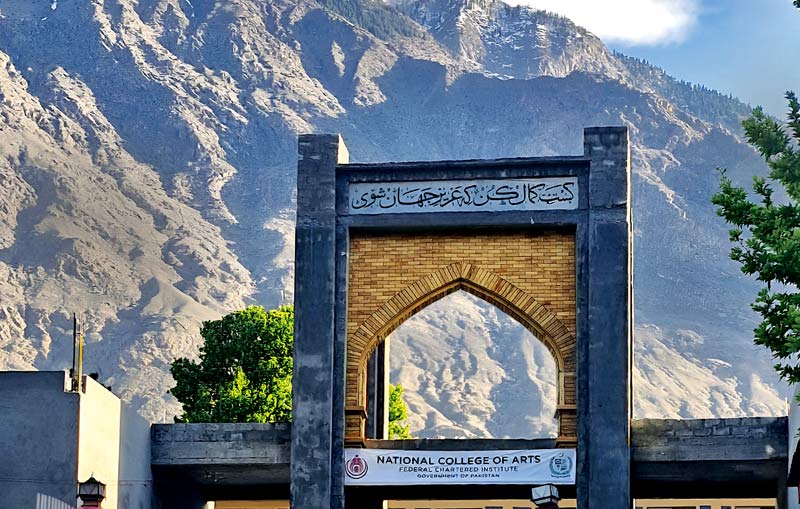
The establishment of the Gilgit Baltistan Campus constitutes a distinctive socio-historical juncture, which is based in a confluence of immensely rich cultures of art education, where a 150-year-old art institution with a thoroughly profound tradition of learning has established a center of education in a region with an equally exhaustive regional art history. Being the first in the region to adopt the Higher Education Commission (HEC’s) Associate Degree initiative, we have envisioned an innovatory academic and infrastructural framework based on a deep appreciation of the regional art and design academia at our Gilgit Baltistan Campus.
For the consistent running of intensive skill-based educational programs, state of the art computer labs, art galleries, student workshops equipped with especially provisioned toolkits and machinery, and well-lit and ventilated studios have been set up at the Gilgit Baltistan Campus. This Campus aims to offer a centralized facility for budding artists, art and design graduates, artisans, writers, researchers, and international artists to nurture a one-of-a-kind culture of learning and skills acquisition.
We have planned to cater amply to the collective needs of the learning community in a purpose-built campus. Additionally, a separate hostel facility for the students and visiting national and international artists has also been provided. At the Gilgit Baltistan Campus, while we aim to offer skill-based education to the regional youth foreseeing their current academic and employment needs, it is hoped that a sense of ownership within the zealous young minds for preserving and furthering the regional cultural heritage for progeny will be fostered. Conserving the regional folklore and craft, while making it accessible to foreign audiences through international artist residencies, a lasting impression will be marked for generations to come.
As it stands on the cusp of its 150th year, one of the oldest art institutions in South Asia, the National College of Arts has taken a critical step towards widening the scope of educational opportunities for Gilgit-Baltistan’s local community. It is with great hope for a fertile future that the National College of Arts foresees the regional artistic landscape transform significantly in the next decades.